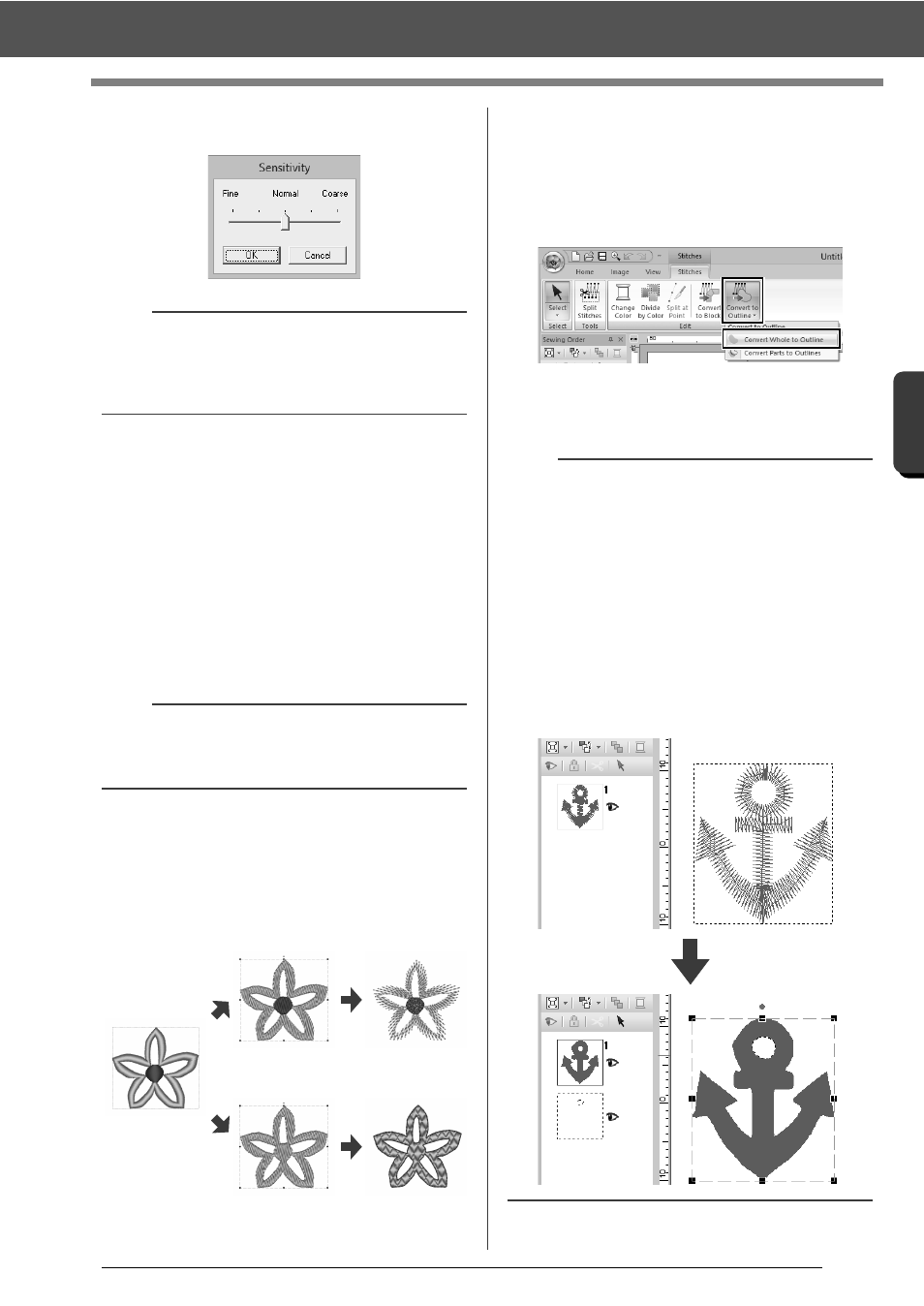76 editing a stitch pattern, Converting stitch pattern to outline pattern – Baby Lock Palette 10 (ECS10) Instruction Manual User Manual
Page 77

76
Editing a Stitch Pattern
B
asic
L
ayo
u
t & E
d
it
in
g
Op
e
rat
io
n
s
3
Move the slider to select the desired
sensitivity. Click [OK].
The stitch pattern is converted to grouped
shape patterns. Being converted to shape
patterns, the outlines of the stitch pattern
can be edited.
cc
For details see the following instructions;
"Setting the sew type" on page 49
"Specifying sewing attributes" on
page 54
"Reshaping Embroidery Patterns" on
page 66
"Specifying the sewing direction" on
page 51
■
Converting stitch pattern to
outline pattern
Outline patterns can be created from each color in a
stitch pattern or from an outline around the entire
pattern.
1
Convert Whole to Outline
2
Convert Parts to Outlines
1
Select the stitch pattern(s).
2
Click the [Stitches] tab.
3
Click [Convert to Outline] in the [Edit] group,
and then click [Convert Whole to Outline] or
[Convert Parts to Outlines].
The outline patterns are created, and the
original stitch patterns are deleted.
b
The [Normal] setting should provide satisfactory
results in most cases, but depending on the
complexity of the pattern, you may need to select
a setting more towards [Coarse] or [Fine].
a
The [Convert to Blocks] command cannot be
used with some stitch pattern imported from
original cards.
1
2
b
• Line sewing in the created outline patterns is set
to [Not Sewn (Line)], and region sewing is set
to [Fill Stitch].
• If the [Convert Whole to Outline] command is
selected, the thread color will be set to the first
thread color in the sewing order for the original
stitch pattern.
• If multiple outline patterns are created from a
single stitch pattern, the outline patterns are
grouped.
• If there is an opening (area with no stitching, but
surrounded by stitching) in the original stitch
pattern, hole sewing may be applied.
